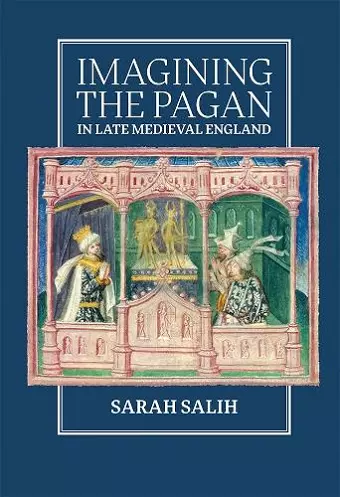Imagining the Pagan in Late Medieval England
Format:Hardback
Publisher:Boydell & Brewer Ltd
Published:16th Aug '19
Currently unavailable, and unfortunately no date known when it will be back

Reads the imagined history of the long term relationship between pagan and Christian through quasi-factual fifteenth-century Middle English writings, from Lydgate's Troy Book to the hagiographies of Bokenham, Barclay and Capgrave and Mandeville's Travels. SHORTLISTED for the 2020 Katharine Briggs Award. Late medieval English culture was fascinated by the figure of the pagan, the ancestor whose religious difference must be negotiated, and by the pagan's idol, an animate artefact. In romances, histories and hagiographies medieval Christians told the story of the pagans, focussing on the absence or presence of pagan material culture in the medieval world to ask whether the pagan era had completely ended or whether it might persist into the Christian present. This book reads the imagined history of the long term relationship between pagan and Christian through quasi-factual fifteenth-century Middle English writings. John Lydgate's Troy Book describes the foundation of a Troy that is at once London's ancestor and a vision for its future; he, John Capgrave and Reginald Pecock consider how pagans were able to build idols that attracted spirits to inhabit them. The hagiographies of Osbern Bokenham, Alexander Barclay, Capgrave and Lydgate describe the confrontation of saint and idol, and the saint's appropriation for Christians of the city the pagans built. Traces of the pagan appeared in the medieval present: Capgrave, Lydgateand John Metham contemplated both extant and lost artefacts; Lollards and orthodox writers disputed whether Christian devotional practice had pagan aspects; and Mandeville's Travels sympathetically imagined how pagans mightexplain themselves. Dr SARAH SALIH is Senior Lecturer in Medieval English, King's College London.
This is a fine study de nos jours, densely yet elegantly written, with much information enthusiastically packed into a short book. Incisive analysis of well chosen passages is supported by exegesis of arresting manuscript illuminations, sharply reproduced and sharply discussed. [...] Here is a must-read for anyone with an interest in fifteenth-century England. * MEDIUM AEVUM *
Salih is a marvelous prose stylist, crafting sentences with brio, and an attentive close reader of both texts and images. Her topic-the demonized, romanticized, imaginary other (often literally imagined as a demon)-is timely. The book is meticulously researched and interesting on every page. * SPECULUM *
This is a volume that particularly rewards careful attention to its theoretical framing. [...] [I]t offers its reader a sweeping literary and material-cultural account of the agency of two specific artifacts of the built world of fifteenth-century England- the city and the idol-as well as a framework for those who would extend this work into other periods and places. * STUDIES IN THE AGE OF CHAUCER *
The full richness of Salih's book is difficult to convey in summary form since it depends largely on closely observed readings of complex literary texts, especially hagiography and pseudo-historical works like Lydgate's Troy Book. Imagining the Pagan is also remarkable for Salih's sustained engagement with late medieval images: manuscript illustrations of Lydgate's Troy Book and Life of St Edmund, Mandeville's Travels, and more. That an author so concerned with late medieval ideas about images and idols should show herself so astute in the analysis of material and visual culture is just one of the many strengths and pleasures of Sarah Salih's extraordinary monograph. * JOURNAL OF BRITISH STUDIES *
The prize exhibit of Dr Salih's book is her evidence that medieval Europeans were capable of entering into some imaginative sympathy with the pagan ancient world even before the Renaissance famously took that step. * Folklore *
ISBN: 9781843845409
Dimensions: unknown
Weight: 590g
221 pages